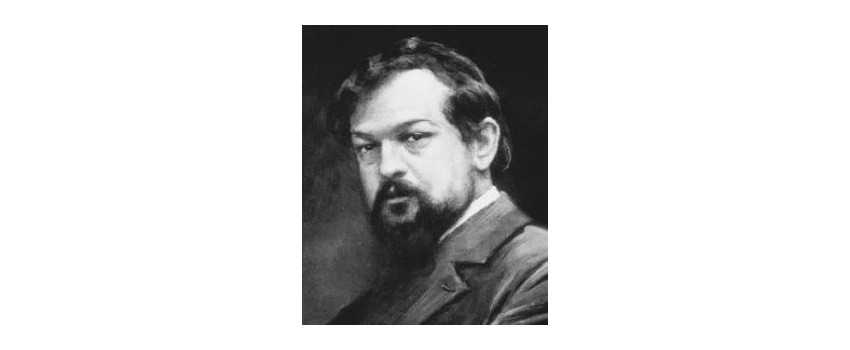Debussy, Nocturne And Scherzo For Cello (Faber)
Debussy, Nocturne and Scherzo for Cello (Faber)
Claude Achille Debussy was born on August 22, 1862, in Saint-Germain-en-Laye, a small town near Paris. His father owned a china shop, and his mother was a seamstress. From an early age, Debussy loved music, and his parents recognized his talent and enrolled him in piano lessons. However, Debussy was not a model student, and he often frustrated his teachers with his lack of discipline and tendency to ignore classical music rules. Despite his early difficulties, Debussy's love for music grew, and he was eventually accepted to the Paris Conservatory in 1872. There, he studied under some of the most renowned musicians of his time, including Ernest Guiraud and César Franck. He also became familiar with the works of Richard Wagner and other contemporary composers, who would later influence his unique style.
Financial difficulties marked Debussy's childhood, and his family frequently moved in search of employment. However, he found solace in music and spent much of his time practicing the piano and composing his own pieces. The romanticism of Chopin and Liszt influenced his early compositions. However, he soon began to develop his style, focusing on harmony and color rather than traditional melody. As he grew older, Debussy became increasingly interested in the music of non-European cultures, particularly that of the Far East. He was also enamored with the newly popular genre of impressionist painting, which aimed to capture the fleeting moments of daily life through color and light. These influences would shape his artistic vision and musical style, setting him apart from his contemporaries and earning him a place in music history.
Debussy's most famous composition is "Clair de Lune," the third movement of his Suite Bergamasque. With its delicate melody and dreamy, impressionistic harmonies, this piece has become synonymous with the romanticism of the late 19th century. However, many other works in Debussy's oeuvre are equally deserving of attention. One such composition is his "Prelude to the Afternoon of a Faun," which draws inspiration from Stéphane Mallarmé's poem of the same name. With its sinuous flute melody and lush orchestration, this piece is considered a masterpiece of impressionist music. Another notable work is his "La Mer," a three-movement orchestral suite that evokes the ebb and flow of the ocean with its shimmering harmonies and complex rhythms.
Debussy's artistic vision was characterized by a desire to break free from the constraints of traditional classical music. Instead, he believed that music should reflect the natural world, with its ever-changing moods and colors. He developed a musical style that emphasized harmony and timbre over melody and structure to achieve this. He also incorporated elements of non-Western music, such as the pentatonic and whole-tone scales, into his compositions, further expanding the boundaries of classical music. The visual arts—particularly impressionist painting—had a significant influence on Debussy's music as well. Like the painters of this movement, Debussy sought to capture the fleeting moments of everyday life, using his music to create vivid soundscapes that conveyed a sense of atmosphere and mood. His use of unconventional harmonies and rhythms and his emphasis on tone created a new musical language that was both highly innovative and deeply emotive.
Debussy's impact on music history cannot be overstated. His innovative approach to composition paved the way for the modern era of classical music, and his influence can be heard in the works of countless contemporary composers. His focus on harmony and tone, rather than traditional melody and structure, inspired a new generation of musicians to think outside the box and explore new possibilities in classical music. Debussy's influence extended beyond the world of classical music as well. His use of non-Western musical elements paved the way for the globalization of music, inspiring composers worldwide to incorporate their cultural traditions into their works. His embrace of impressionism also profoundly influenced the visual arts, as painters and other artists sought to capture the same sense of atmosphere and mood in their own work.
Throughout his career, Debussy collaborated with many of his time's leading musicians and artists. One of his most notable collaborations was with the poet Paul Verlaine, who provided the text for his song cycle "Ariettes oubliées." He also worked closely with the soprano Mary Garden, who premiered several operas, including "Pelléas et Mélisande." Debussy was a highly respected pianist who often performed his compositions in concert. His performances were known for their sensitivity and nuance, and he was widely regarded as one of the finest interpreters of his music.
Claude Achille Debussy was a musical visionary whose unique style and artistic vision revolutionized classical music. His focus on harmony and tone color, his incorporation of non-Western musical elements, and his embrace of impressionism created a new musical language that continues to inspire and captivate audiences today. Debussy's impact on music history cannot be overstated, and his legacy remains a vital part of the classical music canon.

Debussy, Nocturne and Scherzo for Cello (Faber)